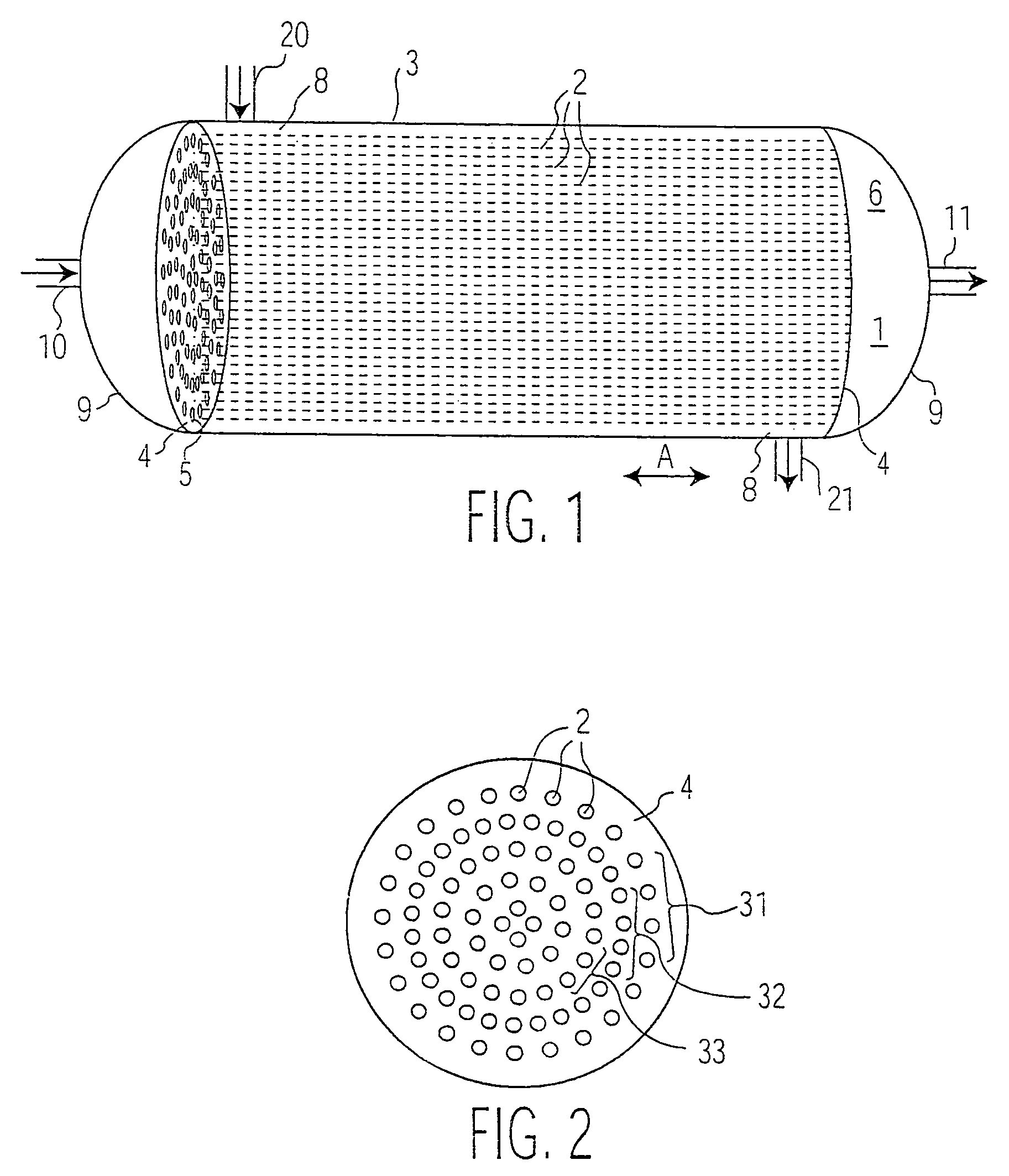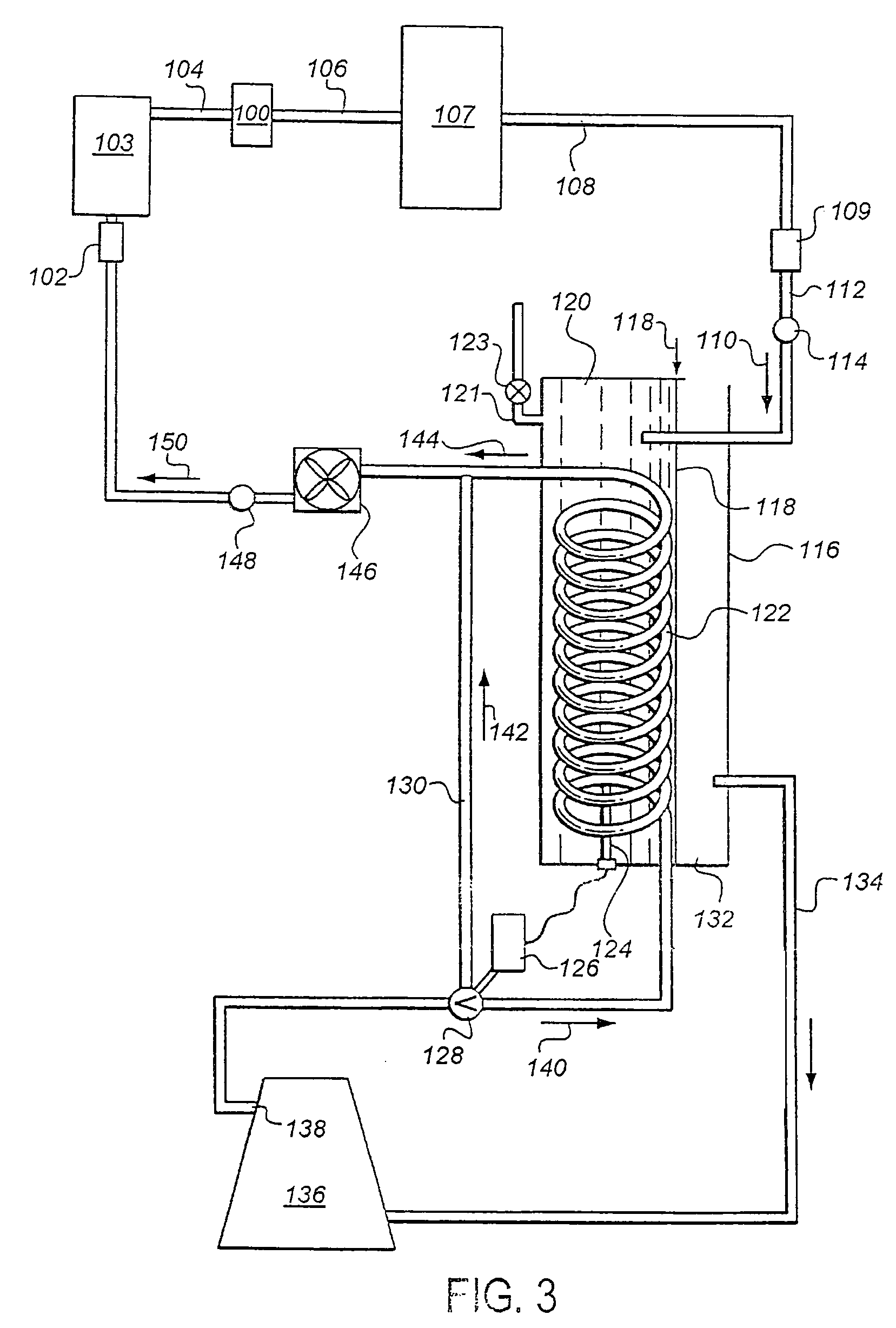Method and apparatus for measuring and improving efficiency in refrigeration systems
a refrigeration system and efficiency technology, applied in lighting and heating apparatus, instruments, heating types, etc., can solve the problems that complex control systems may be required for complex interactions between variables or complex sets of time-constants, and achieve the effect of reducing the topological or computational complexity of the neural network and reducing nois
- Summary
- Abstract
- Description
- Claims
- Application Information
AI Technical Summary
Benefits of technology
Problems solved by technology
Method used
Image
Examples
example 1
[0099]As shown in FIGS. 1–2, a typical tube in shell heat exchanger 1 consists of a set of parallel tubes 2 extending through a generally cylindrical shell 3. The tubes 2 are held in position with a tube plate 4, one of which is provided at each end 5 of the tubes 2. The tube plate 4 separates a first space 6, continuous with the interior of the tubes 7, from a second space 8, continuous with the exterior of the tubes 2. Typically, a domed flow distributor 9 is provided at each end of the shell 3, beyond the tube sheet 4, for distributing flow of the first medium from a conduit 10 through the tubes 2, and thence back to a conduit 11. In the case of volatile refrigerant, the system need not be symmetric, as the flow volumes and rates will differ at each side of the system. Not shown are optional baffles or other means for ensuring optimized flow distribution patterns in the heat exchange tubes.
[0100]As shown in FIG. 3, a refrigerant cleansing system provides an inlet 112 for receivin...
example 2
[0107]FIG. 7A shows a block diagram of a first embodiment of a control system according to the present invention. In this system, refrigerant charge is controlled using an adaptive control 200, with the control receiving refrigerant charge level 216 (from a level transmitter, e.g., Henry Valve Co., Melrose Park Ill. LCA series Liquid Level Column with E-9400 series Liquid Level Switches, digital output, or K-Tek Magnetostrictive Level Transmitters AT200 or AT600, analog output), optionally system power consumption (kWatt-hours), as well as thermodynamic parameters, including condenser and evaporator water temperature in and out, condenser and evaporator water flow rates and pressure, in and out, compressor RPM, suction and discharge pressure and temperature, and ambient pressure and temperature, all through a data acquisition system for sensor inputs 201. These variables are fed into the adaptive control 200 employing a nonlinear model of the system, based on neural network 203 tech...
example 3
[0109]A second embodiment of the control system employs feedfoward optimization control strategies, as shown in FIG. 7B. FIG. 7B shows a signal-flow block diagram of a computer-based feedforward optimizing control system. Process variables 220 are measured, checked for reliability, filtered, averaged, and stored in the computer database 222. A regulatory system 223 is provided as a front line control to keep the process variables 220 at a prescribed and desired slate of values. The conditioned set of measured variables are compared in the regulatory system 223 with the desired set points from operator 224A and optimization routine 224B. Errors detected are then used to generate control actions that are then transmitted as outputs 225 to final control elements in the process 221. Set points for the regulatory system 223 are derived either from operator input 224A or from outputs of the optimization routine 224B. Note that the optimizer 226 operates directly upon the model 227 in arri...
PUM
 Login to View More
Login to View More Abstract
Description
Claims
Application Information
 Login to View More
Login to View More - R&D
- Intellectual Property
- Life Sciences
- Materials
- Tech Scout
- Unparalleled Data Quality
- Higher Quality Content
- 60% Fewer Hallucinations
Browse by: Latest US Patents, China's latest patents, Technical Efficacy Thesaurus, Application Domain, Technology Topic, Popular Technical Reports.
© 2025 PatSnap. All rights reserved.Legal|Privacy policy|Modern Slavery Act Transparency Statement|Sitemap|About US| Contact US: help@patsnap.com



